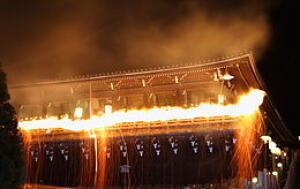Todaiji is located in the northern part of Nara Park. It’s about a 30-minute walk from Kintetsu Nara Station or 45 minutes from JR Nara Station. Buses from both stations stop at Todaiji Daibutsuden, which is a 5–10 minute walk from the main hall.

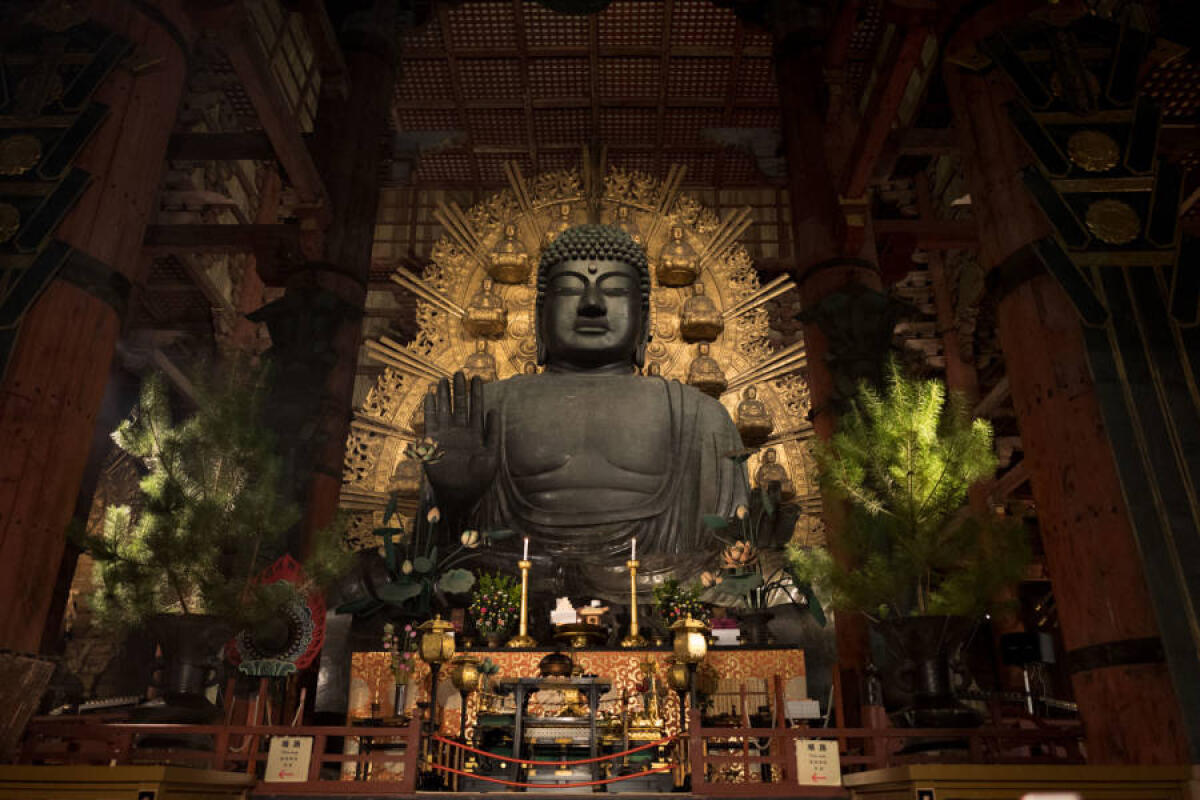
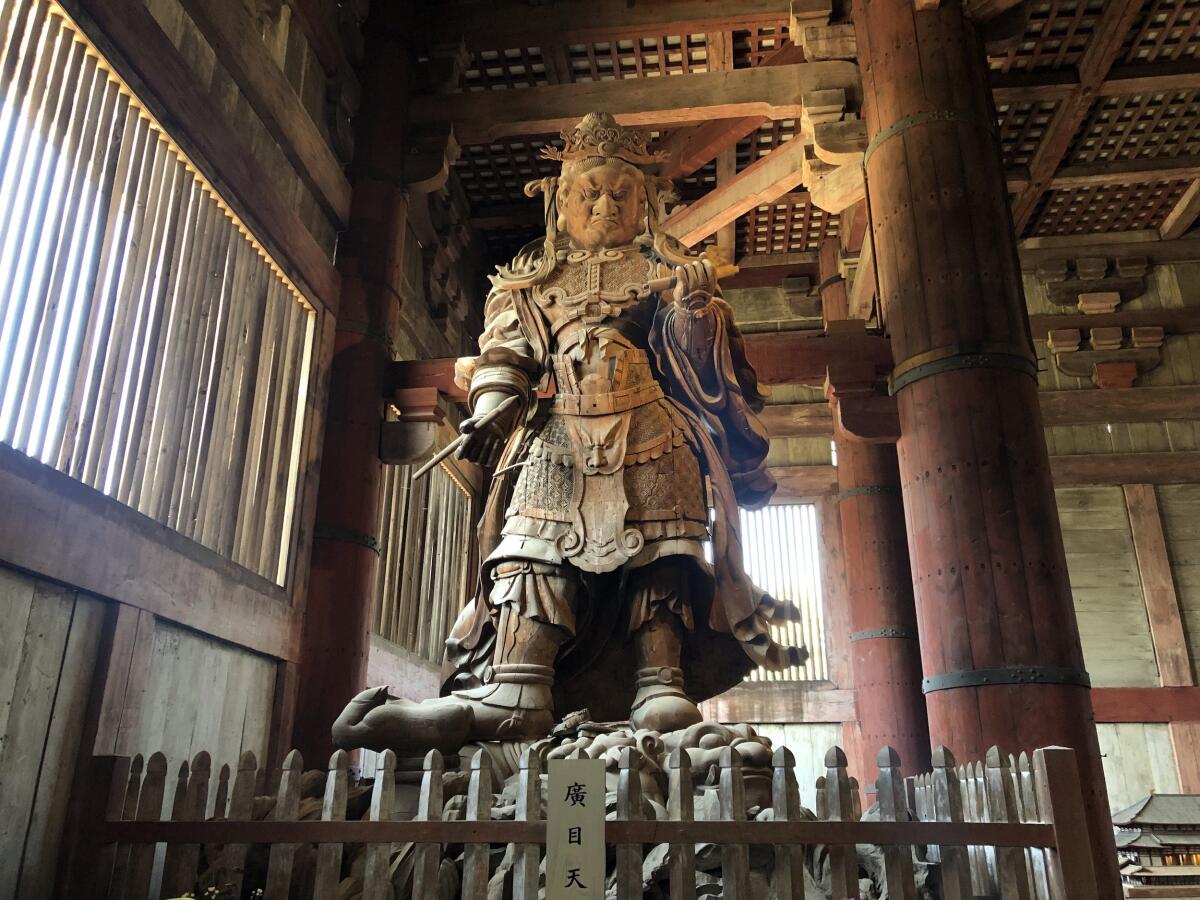
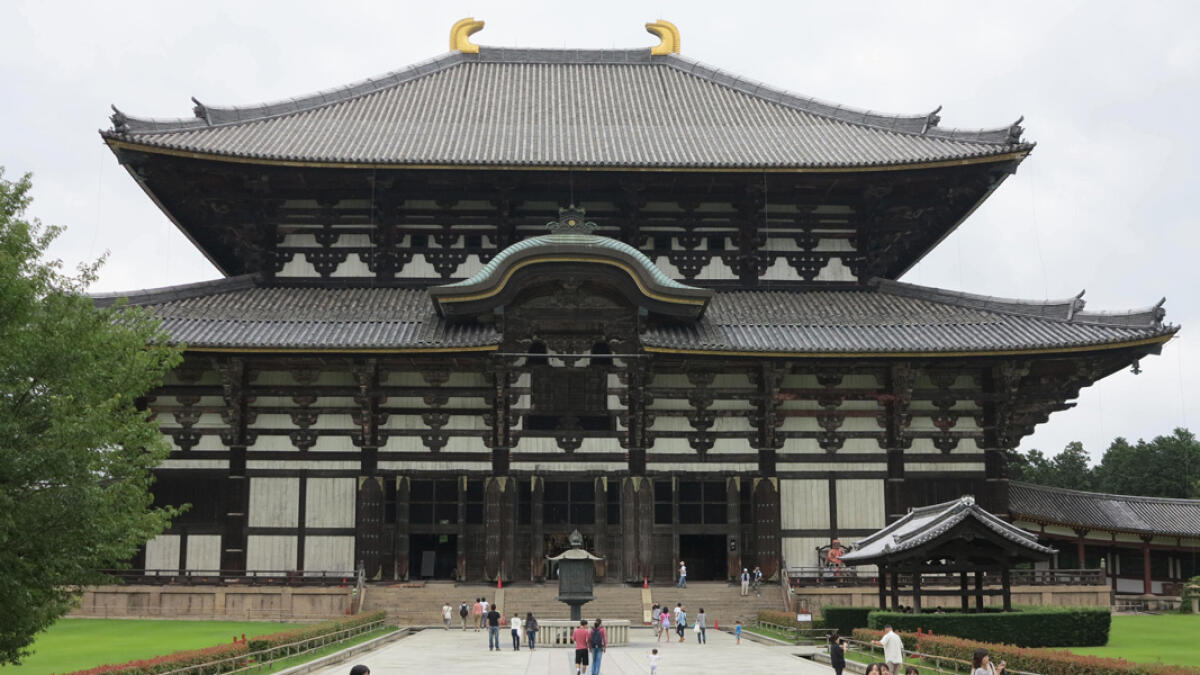
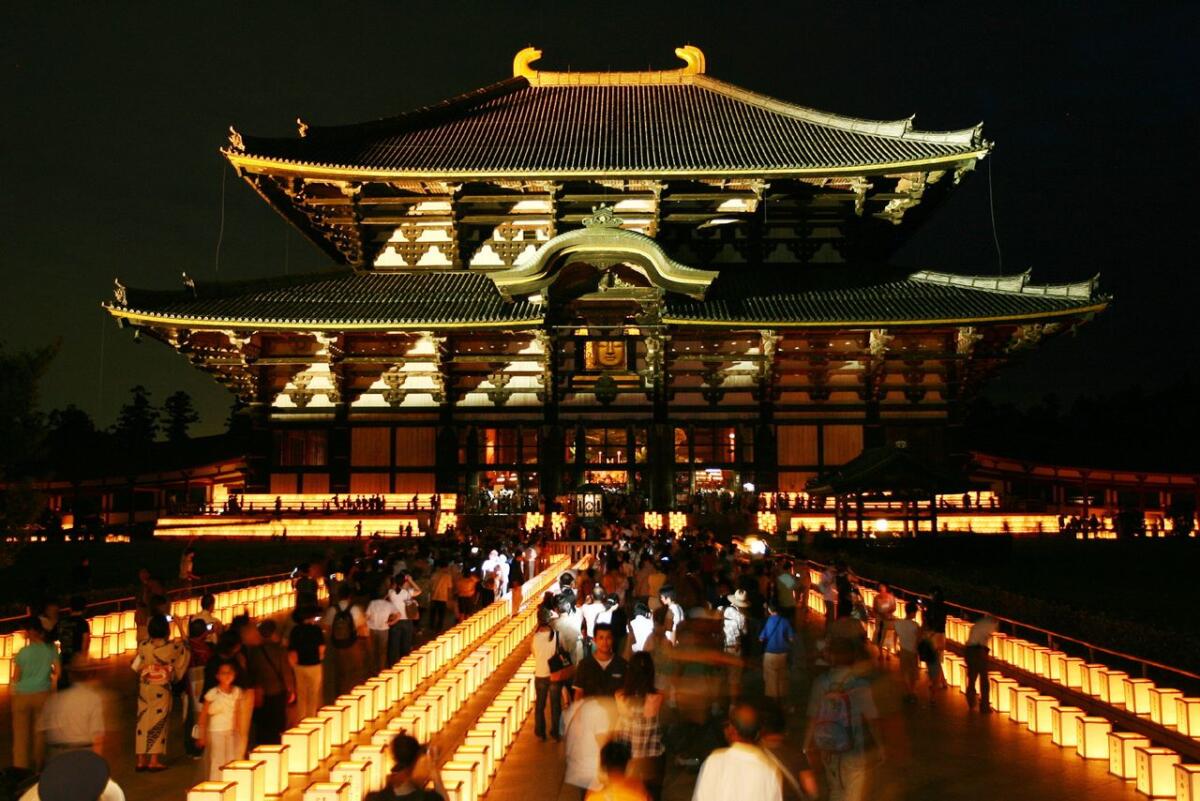
Todaiji Temple
Todaiji (東大寺, Tōdaiji), a historic treasure in Nara, is one of Japan’s most famous temples. Built in 752, it served as the head temple of all provincial Buddhist temples and held such political influence that the capital was eventually relocated to curb its power. The main attraction is the Daibutsuden (Great Buddha Hall), an enormous wooden structure housing a 15-meter-tall bronze statue of Vairocana Buddha, flanked by two Bodhisattvas. Once the world’s largest wooden building, the hall remains awe-inspiring—even at just two-thirds of its original size.
Visitors can explore the Nandaimon Gate, guarded by towering Nio statues, and encounter friendly deer from Nara Park along the temple’s approach. Inside the hall, you’ll find fascinating features, including a pillar with a hole said to grant enlightenment to those who can squeeze through it. Todaiji offers a striking blend of spiritual depth and playful charm, and is one of Nara’s true highlights.
Hours and Fees
- Opening hours
-
7:30 to 17:30 (April to October)
8:00 to 17:00 (November to March)
- Closed
-
No closing days
- Entrance fee
-
800 yen
Getting there
Resources
Events
Nearby
-
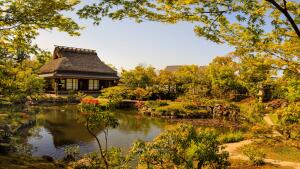 1Isuien Garden — 10-minute walk
1Isuien Garden — 10-minute walkStunning gardens and historical artifacts
-
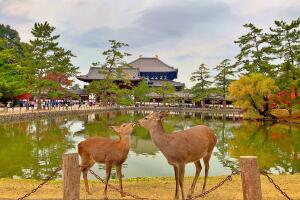 2Nara Park — 15-minute walk
2Nara Park — 15-minute walkSacred deer and historic temples
-
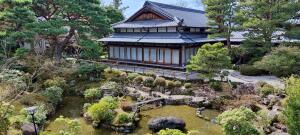 3Yoshikien Garden — 15-minute walk
3Yoshikien Garden — 15-minute walkUnique gardens and traditional Japanese styles
-
 4Nara National Museum — 15-minute walk
4Nara National Museum — 15-minute walkBuddhist art, Todaiji treasures, historic museum
-
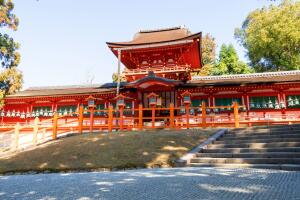 5Kasuga Taisha — 20-minute walk
5Kasuga Taisha — 20-minute walkHistoric shrine, lantern festivals, sacred forest
-
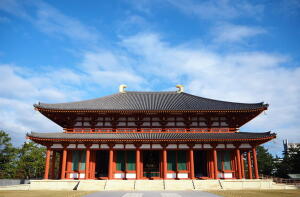 6Kofukuji Temple — 20-minute walk
6Kofukuji Temple — 20-minute walkHistoric pagodas, Buddhist art, Fujiwara legacy
-
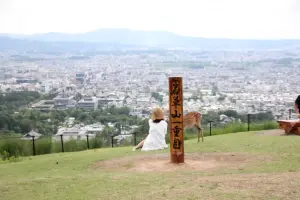 7Wakakusayama — 25-minute walk
7Wakakusayama — 25-minute walkCherry blossoms and Wakakusa Yamayaki
Reviews
There are no reviews
